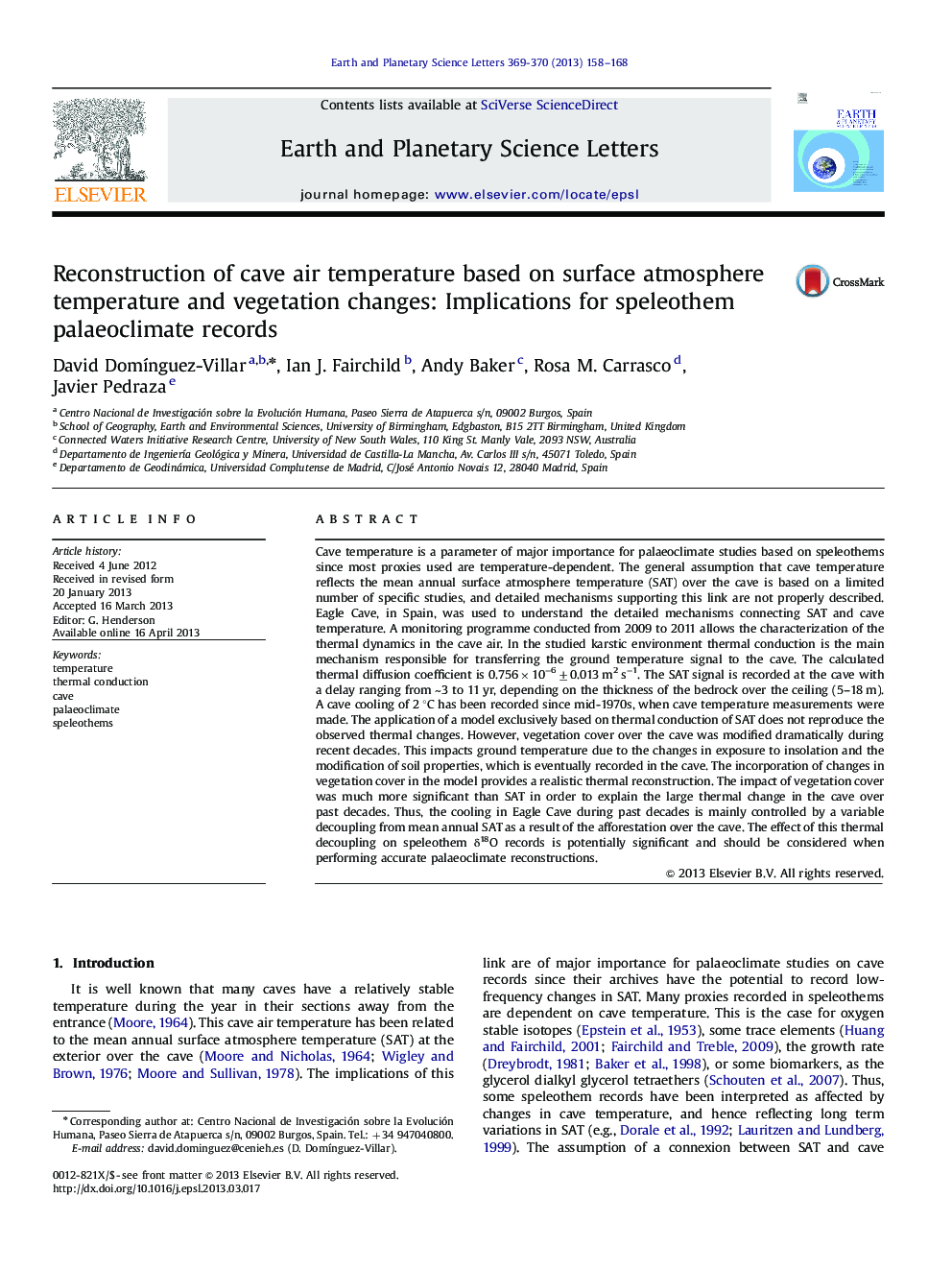| Article ID | Journal | Published Year | Pages | File Type |
|---|---|---|---|---|
| 4677102 | Earth and Planetary Science Letters | 2013 | 11 Pages |
•Surface air temperature was transmitted to Eagle Cave by conduction through the rock.•Eagle Cave records external temperature 3–11 yr later depending on the halls depth.•Changes in vegetation cover caused most of the 2 °C cooling in cave air temperature.•Thermal decoupling is a significant factor affecting most speleothem proxies.•The variability of speleothem proxy records can be related to non-climate controls.
Cave temperature is a parameter of major importance for palaeoclimate studies based on speleothems since most proxies used are temperature-dependent. The general assumption that cave temperature reflects the mean annual surface atmosphere temperature (SAT) over the cave is based on a limited number of specific studies, and detailed mechanisms supporting this link are not properly described. Eagle Cave, in Spain, was used to understand the detailed mechanisms connecting SAT and cave temperature. A monitoring programme conducted from 2009 to 2011 allows the characterization of the thermal dynamics in the cave air. In the studied karstic environment thermal conduction is the main mechanism responsible for transferring the ground temperature signal to the cave. The calculated thermal diffusion coefficient is 0.756×10−6±0.013 m2 s−1. The SAT signal is recorded at the cave with a delay ranging from ~3 to 11 yr, depending on the thickness of the bedrock over the ceiling (5–18 m). A cave cooling of 2 °C has been recorded since mid-1970s, when cave temperature measurements were made. The application of a model exclusively based on thermal conduction of SAT does not reproduce the observed thermal changes. However, vegetation cover over the cave was modified dramatically during recent decades. This impacts ground temperature due to the changes in exposure to insolation and the modification of soil properties, which is eventually recorded in the cave. The incorporation of changes in vegetation cover in the model provides a realistic thermal reconstruction. The impact of vegetation cover was much more significant than SAT in order to explain the large thermal change in the cave over past decades. Thus, the cooling in Eagle Cave during past decades is mainly controlled by a variable decoupling from mean annual SAT as a result of the afforestation over the cave. The effect of this thermal decoupling on speleothem δ18O records is potentially significant and should be considered when performing accurate palaeoclimate reconstructions.
